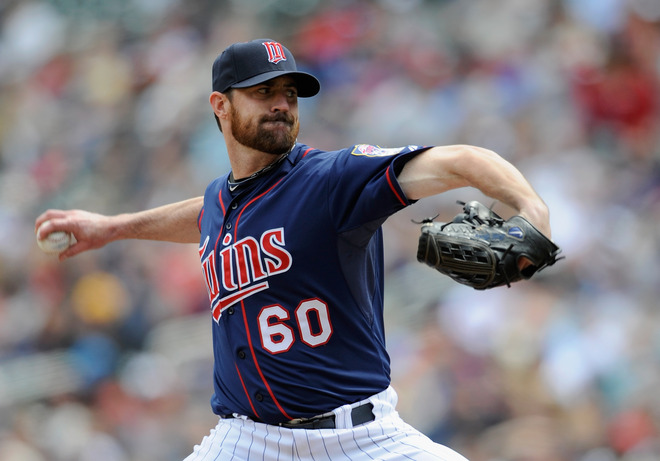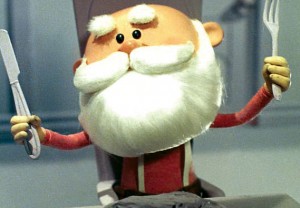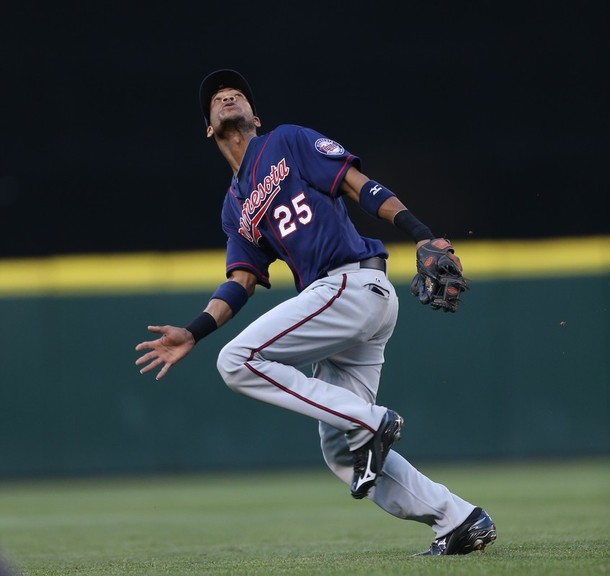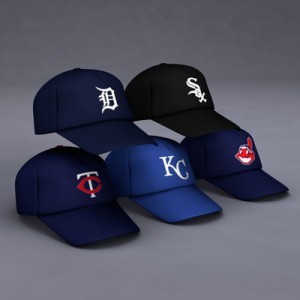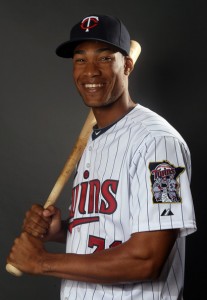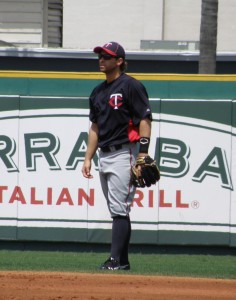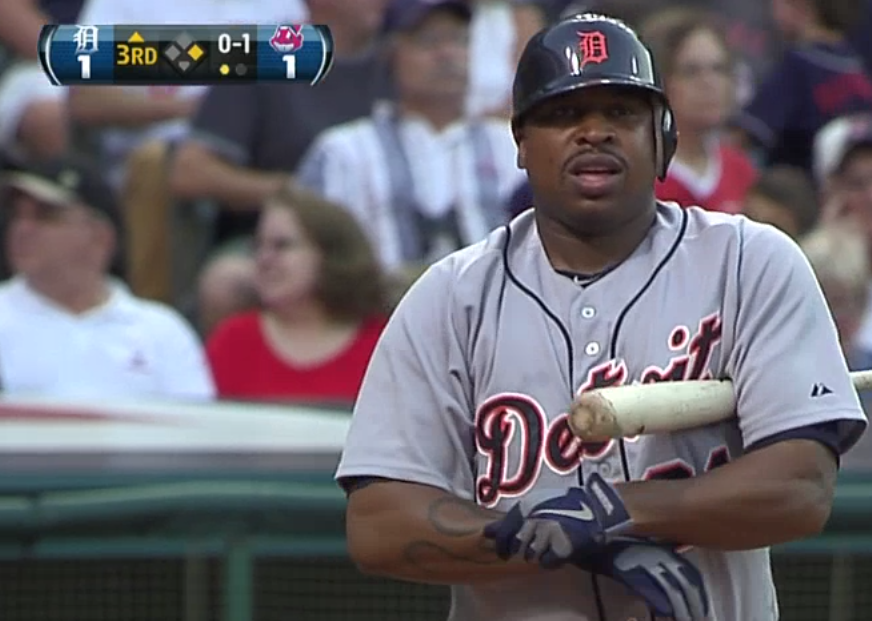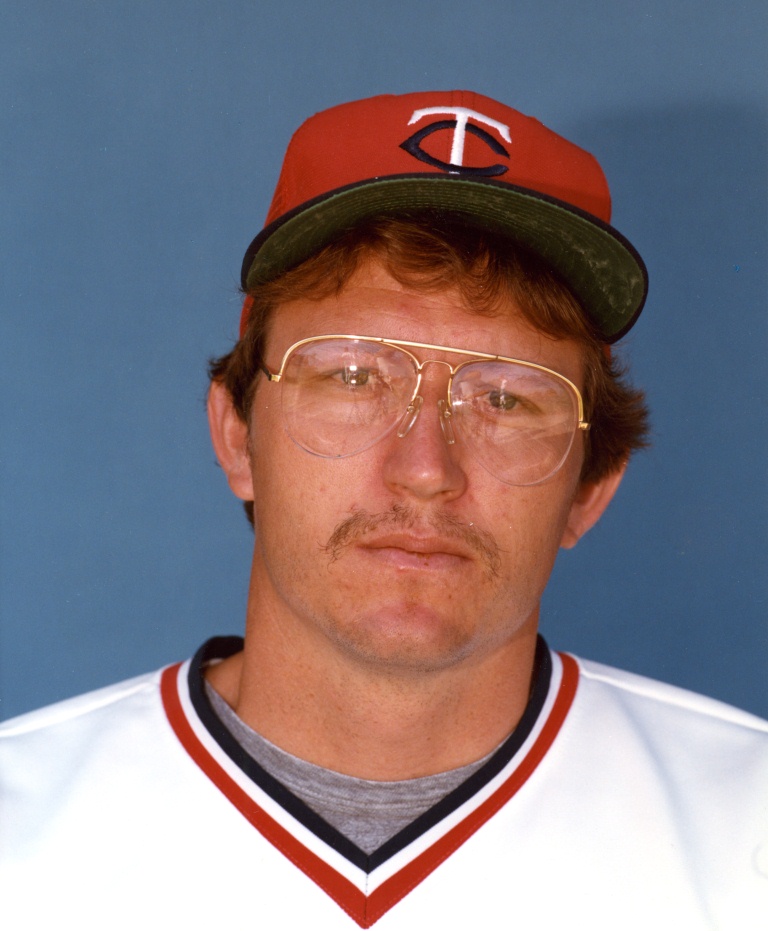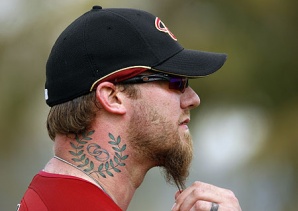The Minnesota Twins have not won a game since Monday, August 20, and the closest they’ve come was the following day in a 4-1 loss to the Oakland Athletics. Since then the Twins have lost by 4, 4, 8 and 6 runs, bringing their season-long run differential to -111, only the Cleveland Indians (-134) have a worse run differential in the American League.
A win today does nothing to help Minnesota in the standings, but it will go a long way toward bringing up morale in the clubhouse of a team that’s been clobbered for the better part of a week. Cole De Vries has a 10.64 ERA over his last 3 starts, he will need to turn things around this afternoon or the Twins will be in another big hole against a high powered Rangers offense.
| Minnesota Twins |
@ |
Texas Rangers |
| Span, CF | Kinsler, 2B | |
| Revere, RF | Moreland, 1B | |
| Mauer, 1B | Hamilton, LF | |
| Willingham, LF | Beltre, A, 3B | |
| Morneau, DH | Cruz, N, RF | |
| Plouffe, 3B | Murphy, Dv, DH | |
| Carroll, 2B | Soto, C | |
| Butera, C | Gentry, CF | |
| Florimon, SS | Hernandez, L, SS | |
| _De Vries, P | _Feldman, P |
Let’s get it!
| 1 | 2 | 3 | 4 | 5 | 6 | 7 | 8 | 9 | R | H | E | |
| Minnesota | 1 | 1 | 1 | 0 | 2 | 1 | 0 | 0 | 0 | 6 | 11 | 0 |
| Texas | 2 | 0 | 0 | 0 | 0 | 3 | 0 | 0 | 0 | 5 | 6 | 2 |
Here is something that happened earlier today: The Minnesota Twins, previously referred to as a professional baseball team, won a contest of baseballing against an actual real-life baseball club. A club, known as none-other than the Texas Rangers. It was pretty fun.
BOD Voting?
Ben Revere had his 6th career 4 hit game and was on base 5 times, despite only hitting the ball out of the infield once. For his performance this afternoon the fans in the Knuckleballs blog GameChat (BaseballPirate and myself, though BaseballPirate was inactive, so really I just picked whoever I wanted), decided to give Ben Revere a nice warm German style beer. Enjoy that beer, Ben.
Jeff Gray pitched a third of an inning and gave up 3 runs, which was pretty impressive for a guy who has no business being on a Major League Baseball team. Anyways, his run-surrendering performance woke up the bullpen and then Casey Fien, Jared Burton and Glen Perkins closed out the game against the high-powered Rangers offense without surrendering another run. For his wake-up performance, Jeff Gray is the BOD. Hopefully he woke up Terry Ryan and Ryan outrights Gray and assigns him to some lesser level of baseball, perhaps Triple-A baseball.
Anyways, enjoy it Gray, you earned it.
